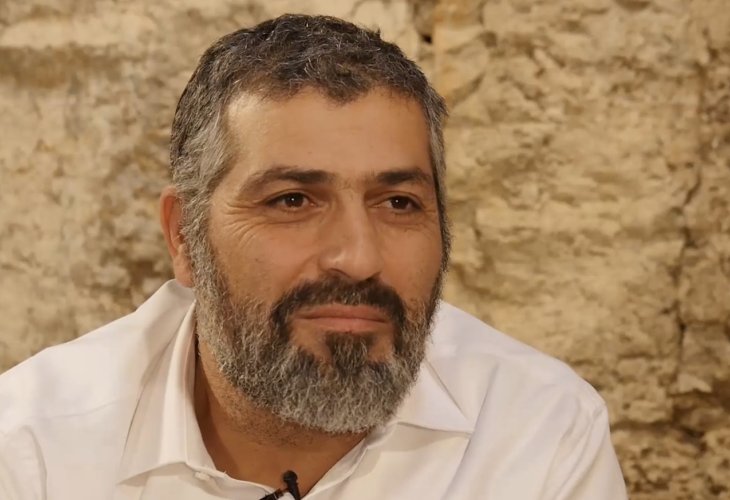Kabbalah and Mysticism
Jewish Yoga: A Torah-Based Path to Mindfulness, Healing, and Spiritual Balance
Explore “Our Yoga” — a fusion of Hatha Yoga techniques with Jewish wisdom, modesty, and Kabbalistic insight, guiding body and soul toward harmony, reflection, and divine awareness
- Assaf Biller
- |Updated

Yoga, as a way of life, combines movement, philosophy, and mindfulness. The practice begins with the body — unique physical exercises that include countless postures (asanas), breathing techniques (pranayama), and deep relaxation methods (shavasana).
Another part of yoga involves one’s daily conduct — how a person interacts with others and lives within society. These behavioral principles are rooted in yoga’s spiritual worldview and ethical philosophy.
However, traditional yoga also includes elements that conflict with Jewish belief, such as idol worship, chanting the names of deities, or using statues and symbols in a ritualistic context.
Hatha Yoga — The Physical Practice
One branch of yoga, called Hatha Yoga, focuses primarily on the physical and energetic aspects of practice — and this is the form that has become popular in the Western world.
In Hebrew, “Hatha” combines two energies:
Ha — the sun, symbolizing heat and activity
Tha — the moon, symbolizing coolness and calm
Like the concept of Yin and Yang in Chinese medicine, Hatha Yoga seeks to balance these two life forces. When the energetic flow in the body is balanced and harmonious, emotional calmness and mental clarity naturally follow.
The practice involves:
Guided physical postures
Conscious breathing and relaxation
Awareness and focused attention
The effect is often immediate — practitioners feel calmer, lighter, and more centered, even after one session. Each person takes from it what they need most — physical healing, emotional balance, or mental focus.
Hatha Yoga is widely used today as a therapeutic tool for adults, children, seniors, recovering addicts, and people with emotional or physical challenges.
What Is “Jewish Yoga”?
King David said in Tehillim: “Who is the man who desires life, loves days to see good? Turn from evil and do good; seek peace and pursue it.”
This verse captures the essence of “Our Yoga” — a Jewish path that integrates the physical benefits of yoga while aligning fully with Torah values.
“Turn from evil” means removing all elements incompatible with Judaism:
No use of mantras containing names of Hindu deities.
No imagery or rituals connected to idolatry.
Classes are conducted in a modest, gender-separated setting with clean, distraction-free environments.
“Do good” refers to using yoga as a tool for self-awareness and spiritual growth. Through proper movement, breath, and focus, the practitioner develops what Jewish thought calls “koach hitbonenut” — the power of inner reflection.
Reflection in Jewish Thought
The ability to observe oneself is one of the most powerful spiritual tools in Judaism. It allows a person to rise above instinct and live consciously, by choosing good rather than reacting automatically.
King David teaches: “Man and beast You save, O Lord.” (Tehillim 36:7) The sages explain that every person contains both the divine soul (neshama), and the animal soul (nefesh habehamit). Our task is to let the divine side lead, through awareness and reflection.
When we act automatically — out of habit, emotion, or impulse, we are ruled by the “beast within.” When we pause, breathe, and reflect, we awaken the divine chooser — the spark of God within us that decides how to act.
Thus, spiritual birth begins when we stop reacting unconsciously and start living with intention and awareness.
Climbing the Spiritual Ladder
Two steps are essential for true spiritual growth:
Pause — Stop reacting automatically.
Observe — Reflect consciously and choose wisely.
Through Hatha Yoga, one can develop these inner skills. The practice provides physical and mental stillness, which is fertile ground for deep self-reflection. Over time, this reflective power becomes part of daily life, shaping how we perceive and respond to reality.
The Wisdom Behind the Practice
Jewish Yoga combines the physical discipline of yoga with the spiritual wisdom of Kabbalah and Chassidut — which illuminate the human soul, its emotions, and its connection to the Creator.
Kabbalistic wisdom teaches that reality is built upon Ten Divine Attributes (Sefirot) — Crown, Wisdom, Understanding, Kindness, Strength, Beauty, Eternity, Glory, Foundation, and Sovereignty. By understanding these principles, one learns to see life as a harmony between the physical and the spiritual.
True wisdom refines perception. Without knowledge, even the greatest introspection may lead to confusion or imbalance.
However, when reflection is guided by authentic Jewish wisdom, it becomes a bridge — connecting body and soul, heaven and earth.
The Purpose of “Our Yoga”
Jewish Yoga uses the safe and effective physical techniques of Hatha Yoga — movement, breath, and relaxation, as tools for:
Physical and emotional healing
Releasing tension
Achieving inner peace and clarity
Combined with Jewish spiritual wisdom, it helps develop deep awareness, leading to a balanced, purposeful, and holy life. “Our Yoga” is not about escaping the world, but transforming the world through awareness, faith, and sacred presence in every breath.

